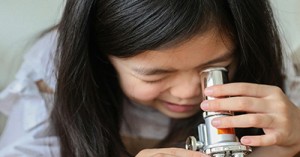Children can create their own jellyfish and learn about these fascinating sea creatures.
Materials Needed:
- Plastic bags
- Plastic bottle (1 litre)
- Scissors
- Water
- Blue food colouring
- White yarn or string
What to do:
- Cut the handles off a plastic bag
- Next, cut the plastic bag in half.
- Have children cut a strip from the plastic bag.
- Next, cut a square out of the plastic bag. Pinch up the centre of the square, this will be the jellyfish’s head.
- Use the strip of plastic bag to tie the pinched section.
- Create tentacles by cutting the plastic bag with scissors.
- Place completed jellyfish into a bottle.
- Add 2 drops of blue food colouring into the bottle and fill it up with water.
- Add some glitter to the water and seal the cap of the bottle.
- Your jellyfish is ready.
Science Factor
Jellyfish and sea jellies are the informal common names given to the medusa-phase of certain gelatinous members of the subphylum Medusozoa, a major part of the phylum Cnidaria. Jellyfish are mainly free-swimming marine animals with umbrella-shaped bells and trailing tentacles, although a few are not mobile, being anchored to the seabed by stalks. The bell can pulsate to provide propulsion and highly efficient locomotion. The tentacles are armed with stinging cells and may be used to capture prey and defend against predators. Jellyfish have a complex life cycle; the medusa is normally the sexual phase, the planula larva can disperse widely and is followed by a sedentary polyp phase.
Hints and Tips:
- Discover fascinating facts about jellyfish.
- Discuss human impact on the oceans, how plastic bags may look like a jellyfish which may be mistaken as food by sme sea animals.
- Each child can make their own jellyfish to take home.
Reference:
Science Work Canada







